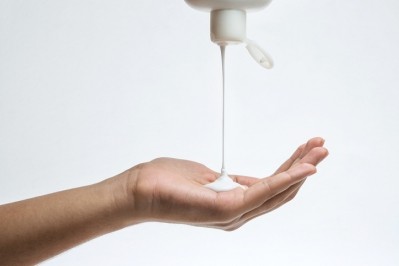European Commission publishes titanium dioxide classification

Publication of the legislation in the Official Journal of the European Union comes after a lengthy and highly contested process which saw several unusual obstacles – including Member States reportedly tabling rare last minute objections during the two month scrutiny period.
The delegated regulation classifies titanium dioxide (TiO2) as a category 2 suspected carcinogen by inhalation under EU Regulation (EC) No 1272/2008. No changes to the regulation have been made since its initial adoption on 4 October.
Classification followed an opinion published by the Risk Assessment Committee (RAC) of the European Chemicals Agency (ECHA) in 2017. The regulation will enter into force after 20 days, with harmonised classifications applying from 9 September 2021.
New requirements that titanium dioxide-containing products to carry cancer warnings on the label will apply only to mixtures in powder form containing 1% or more of the substance with aerodynamic diameter of 10μm or less. For other forms and mixtures, the classification suggests specific notes to inform the users of the precautionary measures that need to be taken to minimise hazard.
While liquid and some solid mixtures are not classified, specific warning statements and labels need to be applied to those that contain more than 1% of titanium dioxide.
Many parts of the industry have disputed the opinions and rulings related to carcinogenicity – arguing that the risks are based on dust hazard which they said is not specific to titanium dioxide.
A huge market
Titanium dioxide is used in a wide variety of products – from paints and coatings, to foods, textiles, pharmaceuticals and cosmetics.
Its is widely used as a pigment which has a bright whiteness, high opacity, and durability which make it ideal for certain applications.
The ingredient has played a central role in the development of cosmetic products for sensitive skin – where titanium dioxide in both its pigment and non-pigment forms have been commonly used.
Titanium dioxide is also commonly used in suncare products.
Reaction
The Titanium Dioxide Manufacturers Association (TDMA) said it disagrees with the classification and has consistently made its views known throughout the regulatory discussion since 2017.
“This classification follows the opinion of the Risk Assessment Committee (RAC) of the European Chemicals Agency (ECHA) and is not based on any new scientific evidence or new understandings about potential harms,” said the association.
“The text attempts to constrain the classification to a hazard associated with the inhalation of excessive volumes of unbound TiO2 dust. This theoretical dust hazard is not new and critically it is not specific to TiO2 but applies to more than 300 substances.”
It added that titanium dioxide ‘has been safely used for over 100 years’ in a very broad array of beneficial products, many of which will now have to carry a hazard label despite there being no inhalation risk to consumers.
TDMA argued that even though the classification is only for the powder form, health warnings on many products that cannot be inhaled, like liquids and mixtures, are also likely to increase consumers' perception of risk and therefore influence the demand for them.
Furthermore, it noted that the text of the entry introduces several new concepts and terms “without providing any meaningful definitions or interpretative guidelines,” and warned that this will open the door to various interpretations.
The association said the time until 9 September 2021, when the regulation will come into full force, “will be needed to attempt to address ambiguities created by the text.”





















